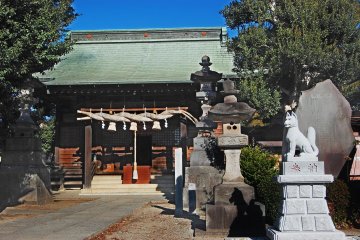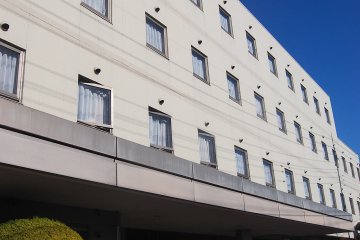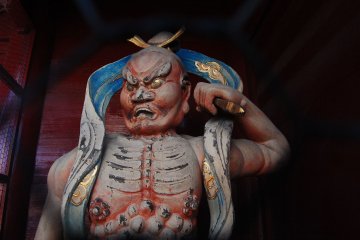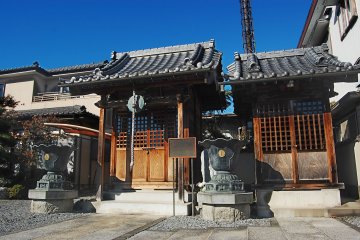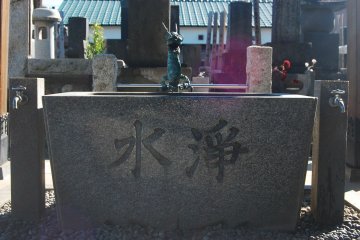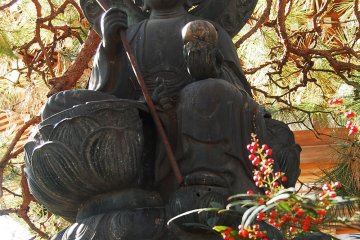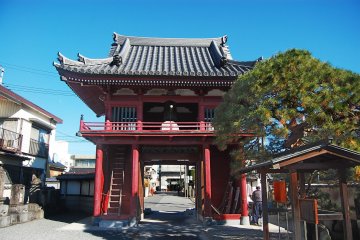Okegawa-juku is one of the post towns on Nakasendo, one of two roads that connected Tokyo and Kyoto in the Edo period. Okegawa-juku is the 7th post town that located in Saitama Prefecture. You can find many scenic Edo-era buildings, as well as some classic temples, in Okegawa. Make sure you visit Jonen-ji temple, built during the 18th century, and its iconic red gate.
While I was staying in Hotel Route Inn Ageo, I decided to explore the local area. Afte reaching Okegawa station I found out about the Jonen-ji temple located not too far away. The eye catching red gate is also a bell tower for the main temple. This is not an ordinary temple gate, originally built in 1701. You can also find two holy guides at the right and left side of this gate.
The complex of Jonen-ji might be not so large, but you can find plenty of interesting features to admire, such as stone flags, statues, and beautiful pine bonsai. Besides praying, most of the local people come here as a family tradition. There's a cemetery just beside this temple. Also, you may clean your hands and rinse your mouth at the purification font or chozuya before entering the main hall to pray.
To get to Jonen-ji temple, you can jump on to Takasaki line from Ueno station in Tokyo, or Omiya station in Saitama city. Just alight at Okegawa station then take the East Exit. There is no entrance fee to get into Jonen-ji temple.
By visiting Jonen-ji temple, you can definitely feel what it would have been like in Japan during the 18th century. Also, Jonen-ji temple could potentially be a starting point to continue your Edo period oldtown journey. There are a lot of sites to visit in Okegawa, from Takemura Inns, Shimamura Tea Store, to Ex-Inns Kobayashi House.



